Bikepacking; an introduction
Hiking on wheels
Bikepacking can best be considered as an allied form of backpacking. Instead of walking your chosen route on foot you undertake your journey with the aid of a bike, often travelling the same off-road trails, at a different speed, and seeing the landscape in a different way. Bikepacking is best compared to ultralight hiking on two wheels and essentially is a stripped back off-road version of bike touring where only the essential gear is carried rather than the loaded down bikes often associated with road touring.
In this article we provide an introduction o bikepacking and the opportunities it affords, talking through some gear basics, and looking at why it’s an option worth considering.
Why Bikepack?
Over the past seven years I’ve hiked almost every designated trail within the Canberra region and while there are a small handful I revisit on a semi regular basis, the ability to do longer adventures requires me to think outside the box and create my own adventures or approach pre-existing trails in a different way with one option being bikepacking.
Riding a trail by bike I have previously walked provides a whole new perspective as you travel at a faster pace, and usually cover larger distances in shorter timeframes. In addition, I find that when I’m riding a pushbike whether it’s in an urban area or on-trail, it helps to use a whole different set of muscles and as a result my hiking adventures also benefit. If I’m organised, cycling forms part of my fitness regime as I lead into longer distance hikes and doing this on-trail keeps the interest high.
Equipment
If you’ve ever seen cyclists doing long distance road touring then you will often be amazed at the huge loads they sometimes carry – every square inch of the bike is loaded down with bags of one type or another. The more you load the bike up, the harder you have to work so the aim is to minimise what you carry and how. As mentioned, bikepacking is the two-wheel equivalent of ultralight hiking whereby you carry only the essentials and leave the excess at home.
Like hiking you don’t have to go out and buy all new gear all at once. Instead you can rely on using equipment that you already have at home including your hiking gear. Like any activity you can also spend up big but where do you start? There are so many gear options on the market to choose from its really a matter of deciding what suits you. Before you get carried away with gear purchases decide if this is an activity that you are into. The following outlines pieces of equipment to consider:
Bike
This is really the only ‘must have’ piece of equipment, everything else can be repurposed from your hiking/camping gear until you have decided that this is something you are going to do regularly rather than just the occasional activity.
In my case bikepacking is an occasional thing rather than a regular thing so rather than splurging on a brand new bike, I’m happy to use my 14 year old hybrid mountain bike. It gets serviced regularly, is in good condition and has basic suspension that softens the ride on bumpy trails although a softer seat would be appreciated!
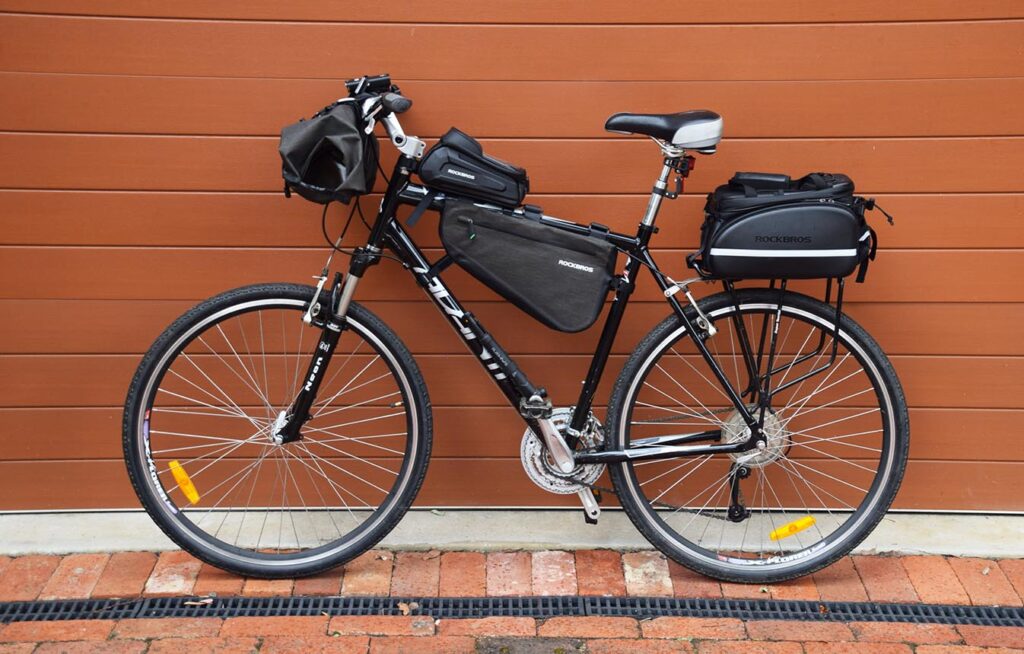
My bike set up and ready to go
Hydration pack/daypack
The last thing that you want to do is carry a heavy backpack while you are riding a bike however a good quality hydration pack or daypack is a great option. If it’s hot it allows me to carry my day’s water in a bladder that is easy to access without having to stop. Which one you choose will depend on how much carrying capacity you need. In my case I can usually get away with a hydration pack.

Source Pulse Hydration Pack with 2 litre bladder. If I need something bigger, I’ll use one of my daypacks like my Osprey Talon Pro 20 pack. I also use the small storage packet for my valuables
Handlebar bag
This waterproof bag straps across the handlebars and in my case carries my tent, sleeping bag, sleeping bag liner, sleeping mat, pillow and Jetboil Zip stove comfortably.
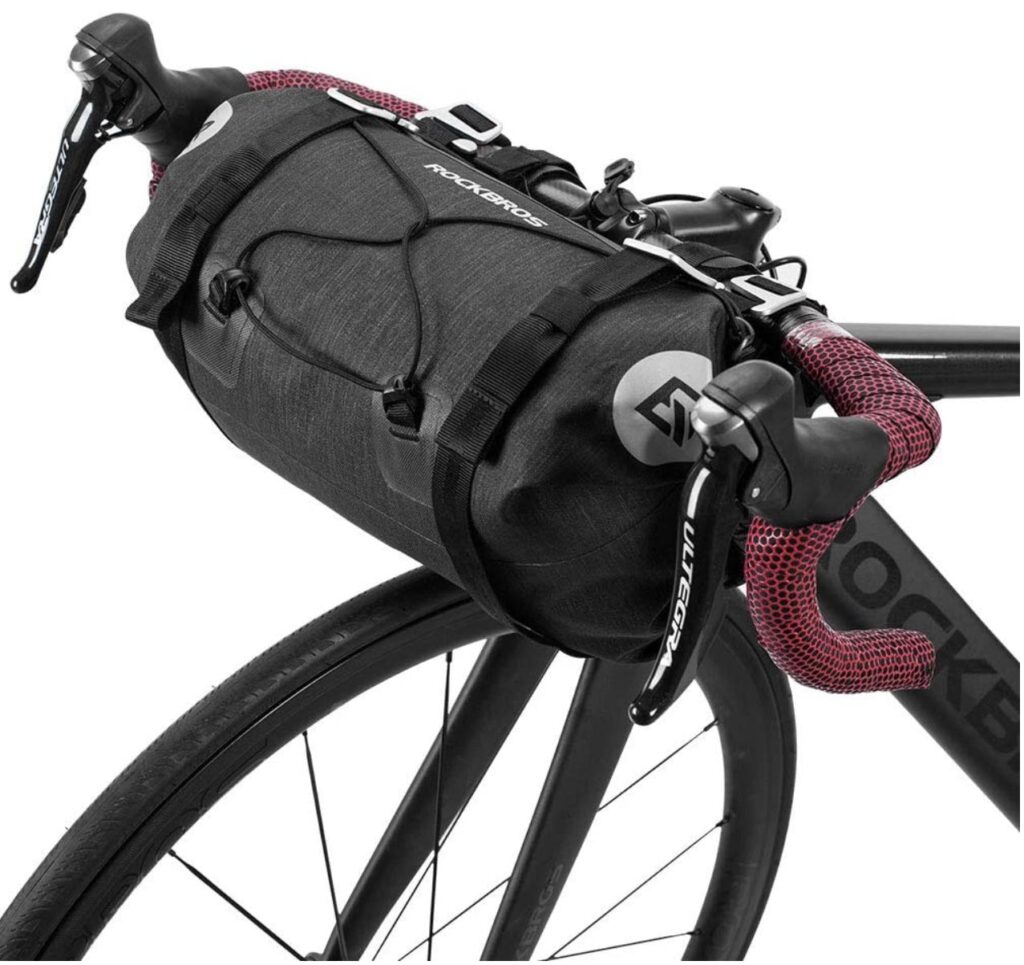
Frame bag
This bag sits under the horizontal bar adds another option for storage. In my case I use this 8 litre bag to carry all my food and can comfortably fit 3-4 days of meals and snacks.

Frame Bag
Phone mount bag
This allows you to see your phone screen as you are riding. For me this takes my phone, battery pack and ear buds.
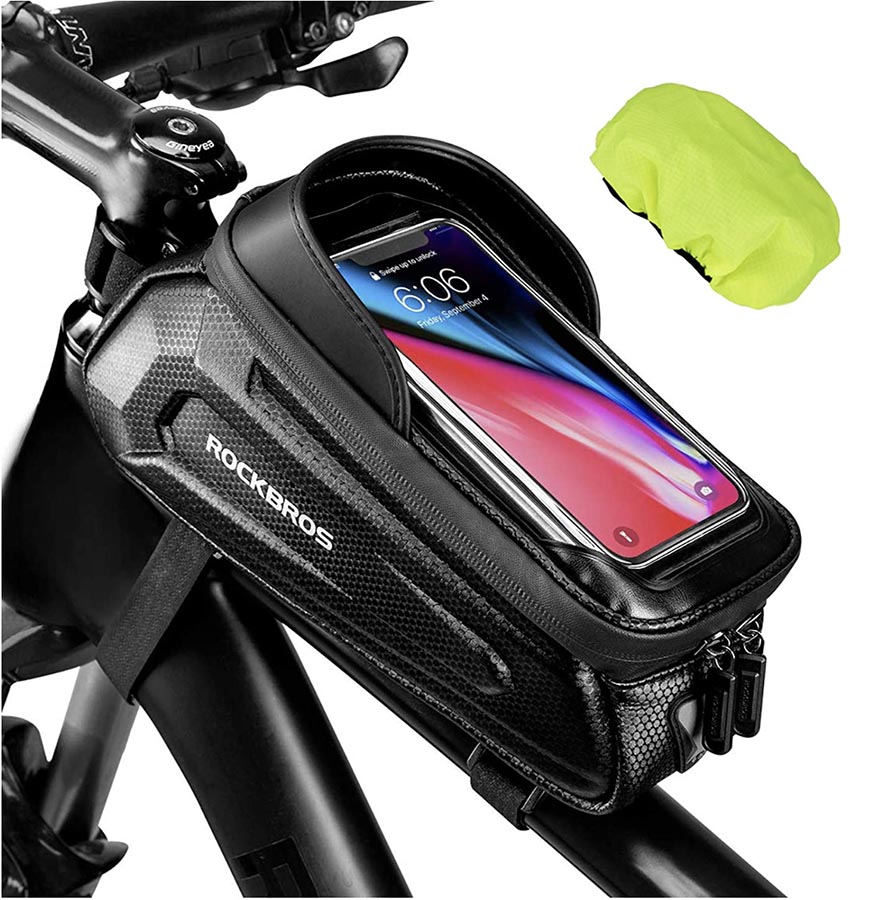
Phone Mount Bag. This small bag also comes with its own rain cover
Bike rack bag
This multipurpose bag comes with optional dividers that can safely carry sensitive camera equipment or anything else you wish. Apart from the main compartment there are also two side fold-out panniers that increase the carrying capacity of this bag. It also comes with its own rain cover. I use this bag for carrying my clothing and rain gear, and rarely use the pannier option.
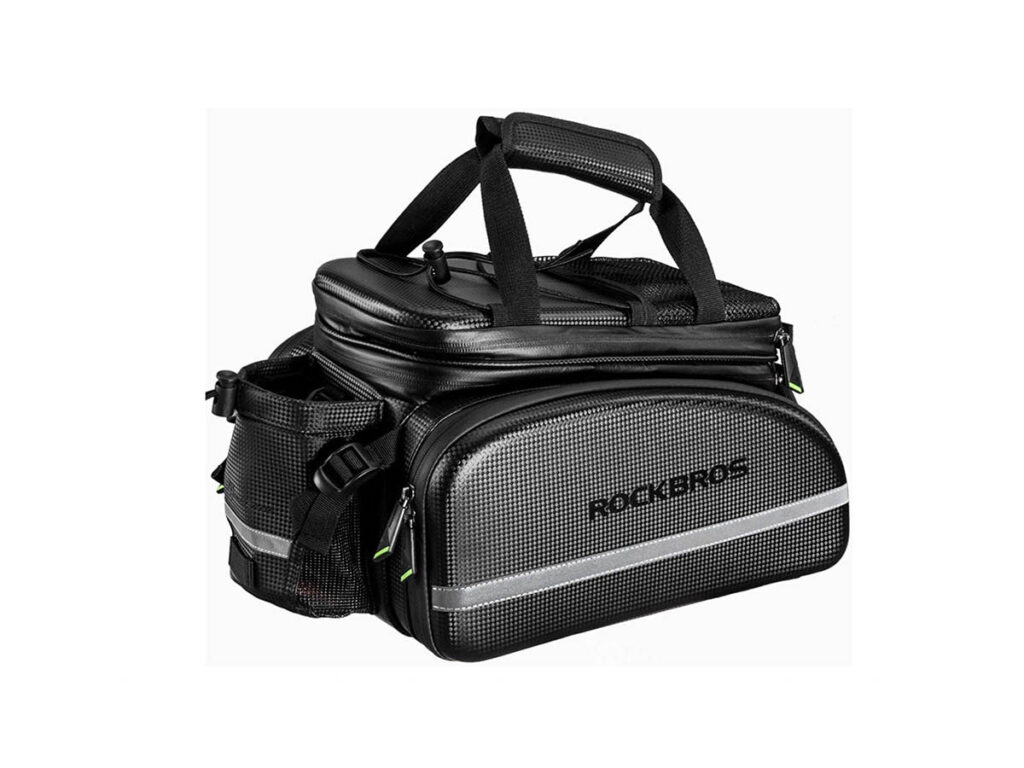
Bike rack bag
Bike headlamp/tailight
If I’m using my bike for exercise its not unusual to be out and about early in the day when its dark so I use a taillight and headlamp.

Bike Headlight Bike Light Front USB Rechargeable Bicycle Headlight 400/800 lumens
Sun protection
Australia has one of the highest incidences of skin cancer in the world so sun protection is critical if you are bikepacking in the hotter weather. I must admit to getting caught out on this one. I remember thinking to myself that I needed to get these lycra sun protection gloves out and then promptly forgot them and when your hands are locked on the handlebars for a number of hours during a hot summer your hands will fry if you are not careful.
Even though you will be riding with a helmet you need to ensure that you head is protected. As someone with no hair the helmet air vents also allow the sun in and can give you a lovely patterned sunburn if you aren’t careful. In my case I wear a lightweight buff underneath the helmet which also protects my forehead, ears, and neck from sunburn as well. If you have plenty of hair this my not be an issue but keep it in mind anyway.
When choosing a helmet pick one with a sun visor.
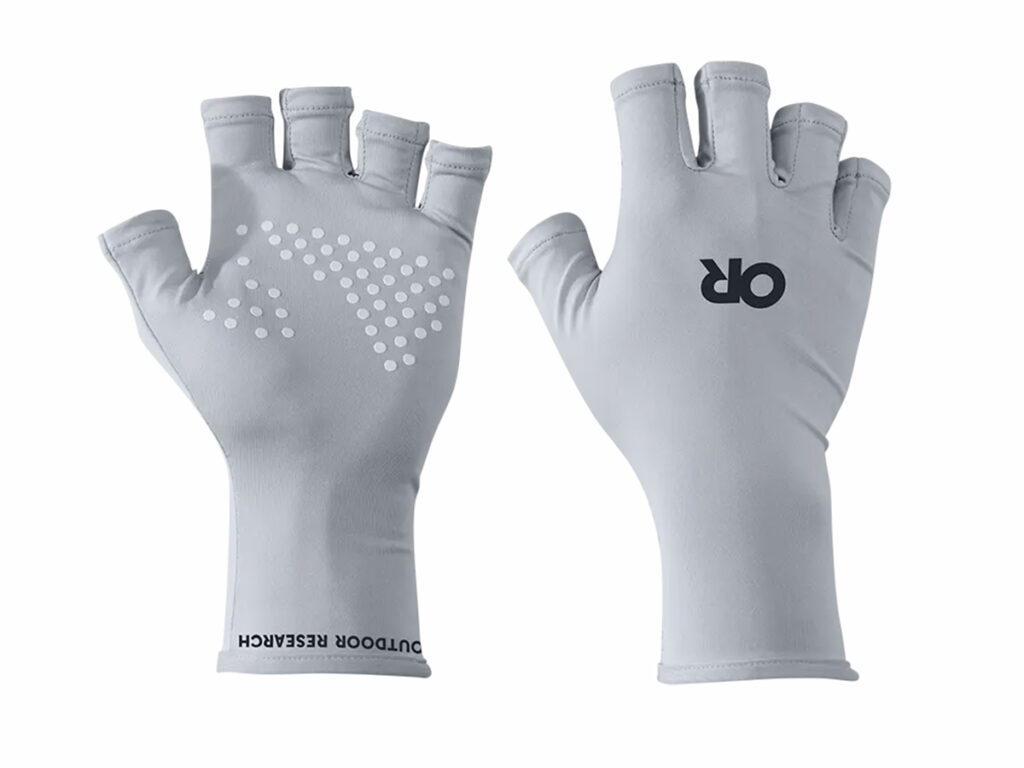
Outdoor Research Active Ice Spectrum Sun Gloves

I always wear a buff under my helmet in the hotter months
Advantages and disadvantages
Advantages
- See familiar trails in a different light
- Cover bigger distances in shorter timeframes
- Use different muscles than you normally do when hiking to help build fitness
- Gear weight isn’t on your body like hiking packs
Disadvantages
- If you are into the little stuff close to the ground such as orchids or insects, traveling higher up and at speed mean you may miss all the small stuff
- Not all trails are suitable for bikepacking. There are some Australian hiking trails that prohibit the use of wheeled vehicles so as to stop the spread of soil borne diseases
Final thoughts
Bikepacking can be as simple as a short overnight trip or longer multi-day adventure. The only limitation is your fitness, your imagination and your desire. While bikepacking will never replace hiking as my outdoor activity of choice, it is something provides an alternate adventure as well as an option for seeing familiar trails in a different light.